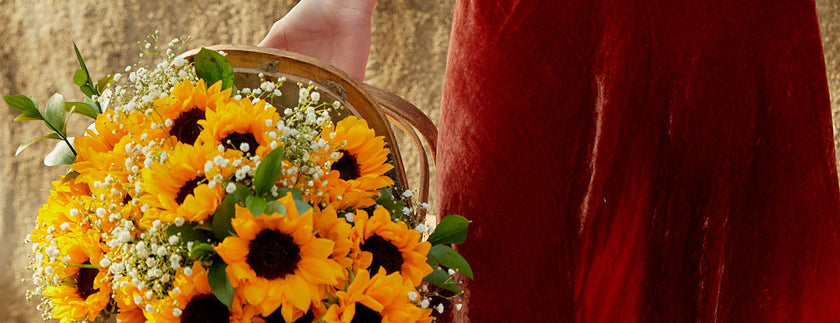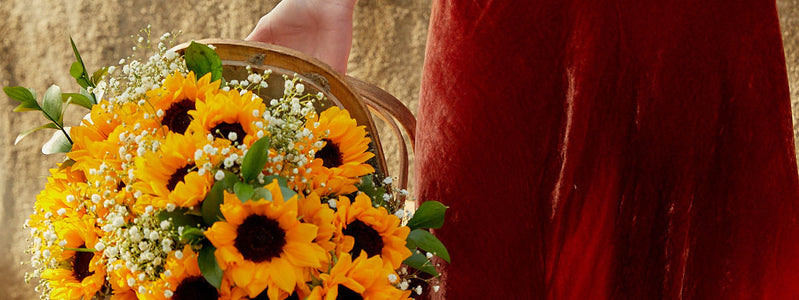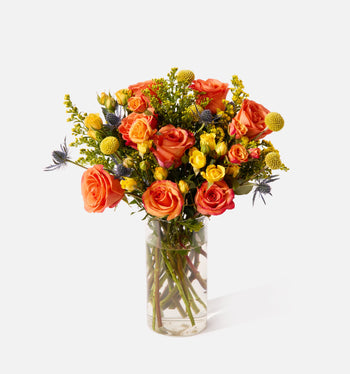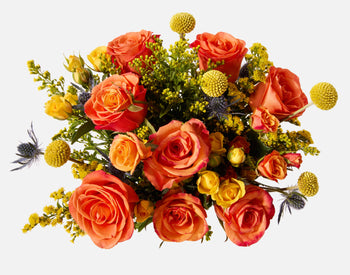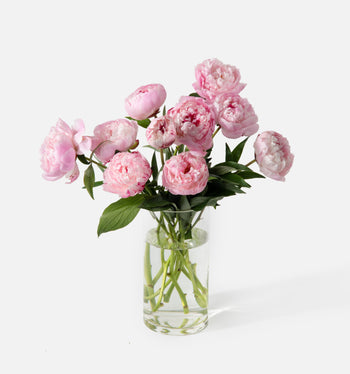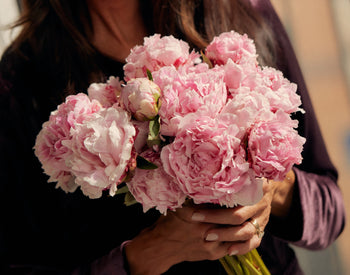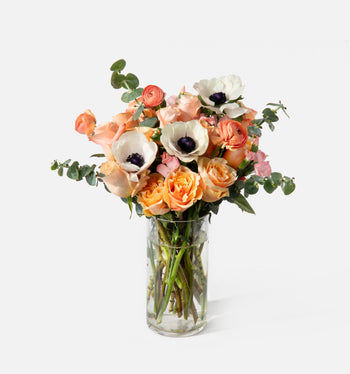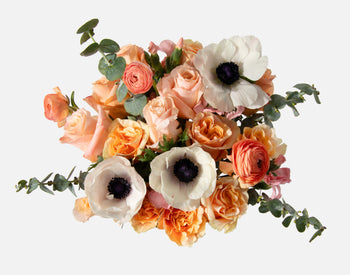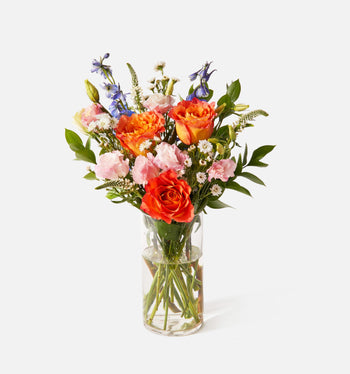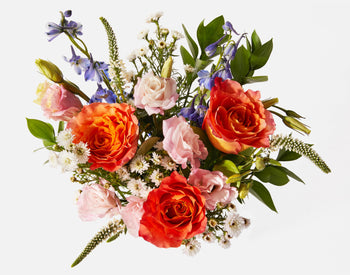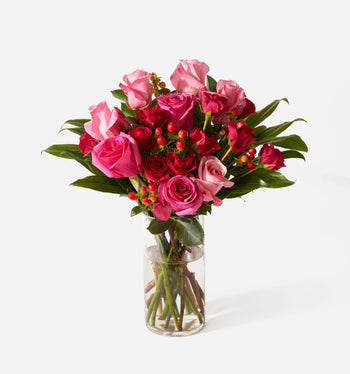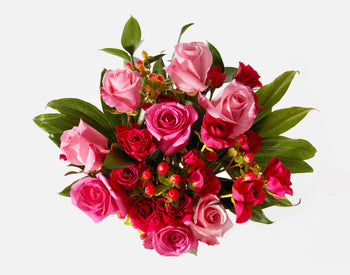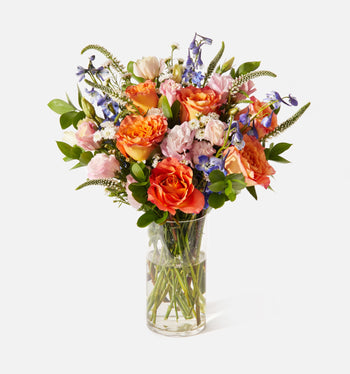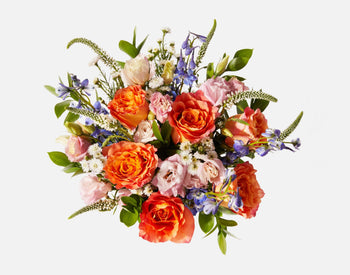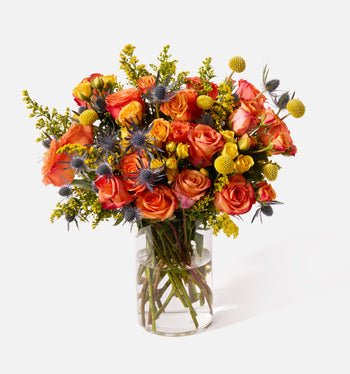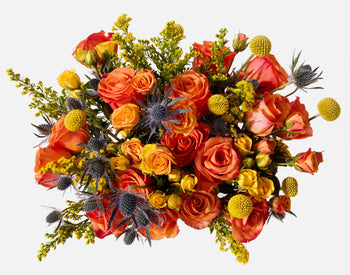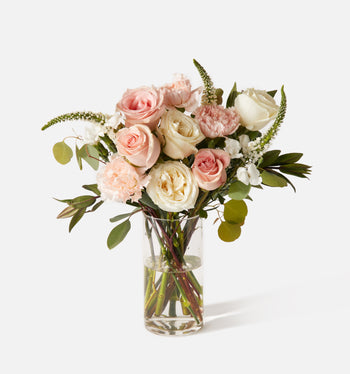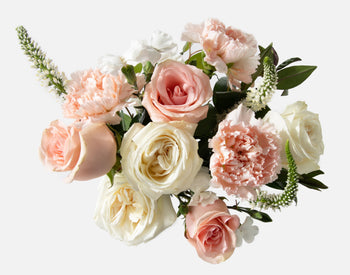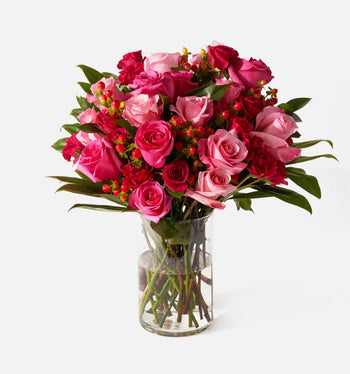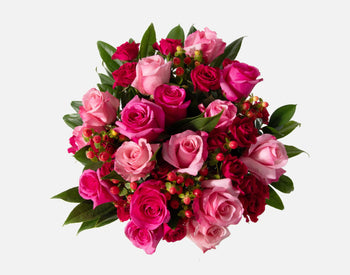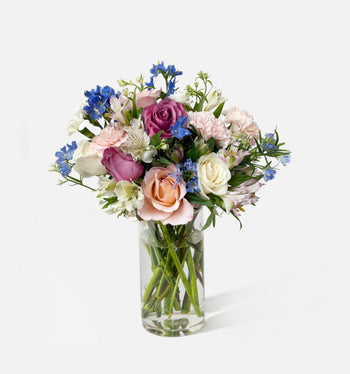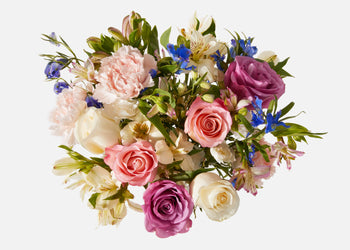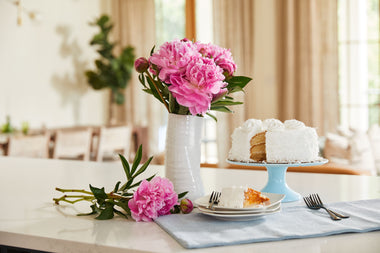All flowers are associated with certain characteristics or traits. The sunflower is no exception — it’s one of the most meaningful of all varieties. Known for its brilliant color, its vibrant petals, and its showy appearance, the sunflower is fascinating in many ways. It is distinctive for its beauty, but it also represents a whole range of positive and uplifting emotions that set it apart from other blooms. Here’s a brief look at what it means and why you may want to give it for a special occasion — or just because.
The Meaning of Sunflowers
Few flowers are so immediately resonant with joy as the sunflower. It’s the ultimate symbol of happiness. And it’s no wonder, given that sunflowers literally track sunshine. The plants are heliotropes, which means they face east in the morning to greet the sun, then begin their slow turn west with the sun’s journey across the sky. Then, overnight, it returns to its eastward position.
What’s fascinating is that sunflowers only do this in their youth. Once they reach maturity, their growth pattern slows, and their circadian clock essentially locks them into place in the early morning sun and prevents it from continuing west. These east-facing sunflowers also draw more than their fair share of happy pollinators in search of wonderfully warm, nourishing vegetation.

The bountiful sunflower needs no introduction. It’s a large, eye-catching, exquisite variety that commands attention at a glance. It’s no surprise that sunflower history is as deep as the flower is beautiful.
Legend has it that Clytie, an ancient Greek nymph, was madly in love with the god of the sun, Apollo. The latter didn’t feel the same way, however, and eventually left her for Leucothea. Clytie couldn’t bear the deception and resorted to telling Orchamus, the father of Leucothea. Enraged, Orchamus buried his daughter alive.
Clytie felt victorious, believing that with the death of Leucothea would come her great reward — Apollo’s love. This was not to be, however, as her behavior only caused him to shun her further. A depressed Clytie lay on the rocks gazing upward at the sun, neglecting to eat or drink in her despair. By the ninth day, she had transformed into a sunflower. She faced the sun constantly as a result, allowing her to be in the presence of Apollo for eternity.
Beyond legend, the sunflower was also favored as a source of nourishment by hunters and gatherers. They picked it regularly, grinding their seeds and using the flour to make bread. They also used the seeds to make oil, which they could then use to cook their meals. Its culinary popularity inspired its domestication throughout North America.
The tragic love story of Apollo and Clytie does, in some way, link the sunflower to emotions like loyalty, endurance, and adoration. Clytie did not give up on her love, and she went out of her way in her efforts to woo Apollo. Although he did not share her affection, her feelings for him never waned.
Beyond its mythological roots, the majestic sunflower meaning is diverse. In China, for example, the flower is viewed as a symbol of good fortune and everlasting joy. It’s often given when wishing someone good luck or to express happiness for an accomplishment, such as graduating from college, starting a new business, or getting a promotion. The country also ties sunflowers to other positive traits, like longevity and vitality.
Sunflower Symbolism

While you can find sunflowers in colors ranging from red to bronze to white, it’s the yellow variety that enjoys the greatest popularity. The uplifting hue is naturally associated with sunshine, and lends the flower its innate cheerful vibe. Yellow alone is representative of happiness, joy, virility, intelligence, and friendship. All of these characteristics make the yellow sunflower a particularly thoughtful option to give to a dear friend or a significant other.
In some cultures, the sunflower is even considered an emblem of faith and worship. This is likely due to the flower’s sun-like silhouette. The sun is tied to spirituality and a search for inner truth, peace, and light. And just as the flower follows the sun in its youth, believers of different faiths rely on their belief systems for guidance.
Culturally, sunflowers enjoy tremendous significance for their importance throughout history. They’ve appeared in some of the most beloved works of art in the world, and they make appearances in famous novels. Important figures in history have referenced sunflowers for their undeniable beauty.
When To Give Sunflowers
The sunflower is among the most uplifting choices you can give to a loved one simply to make them smile. Sunflowers are also given to couples celebrating their third anniversary and on National Friendship Day. The bright color is infectious, and you’re certain to turn anyone’s day around when you surprise them with a bouquet like The Autumn Harvest. Brimming with the lovely sunflower, it will instantly liven up any home or office.
Another surefire surprise that’s sure to be a hit? Treat the summer baby in your life to The Golden Sunflower! This bundle includes a radiant sunflower arrangement coupled with a KOBO Sweet Sunflower Candle that captures the heady scent of green melon and lemon. It’s festive, summery fragrance at its best.
It’s also a no-fuss choice for those whose green thumbs are a little rusty. Regular watering and plenty of sunshine are all that this lovely flower needs to thrive. There’s no better way to make the joyous sunflower an integral part of anyone’s world!
It’s impossible to go wrong with sunflowers. They evoke a sense of timeless beauty, and whether they stand on their own in a sunflower-only arrangement or serve as complementary accents to other stems and they play their role perfectly.
FAQs
What do sunflowers symbolize?
Sunflowers symbolize happiness, warmth, and loyalty. They are often associated with positivity and vitality, making them a perfect gift to brighten someone’s day.
When is the best occasion to give sunflowers?
Sunflowers are versatile and suit a range of occasions, including birthdays, anniversaries, and or a just because gift. They’re also great for celebrating new beginnings or offering support and encouragement.
How do I care for a sunflower bouquet?
To care for your sunflowers: trim the stems at an angle, use a clean vase with fresh water, replace the water every two days, and keep the bouquet in a cool spot away from direct sunlight.
Can sunflowers be part of a mixed bouquet?
Yes! Sunflowers pair well with other flowers like roses, lilies, or daisies, to create a vibrant arrangement perfect for any occasion.
